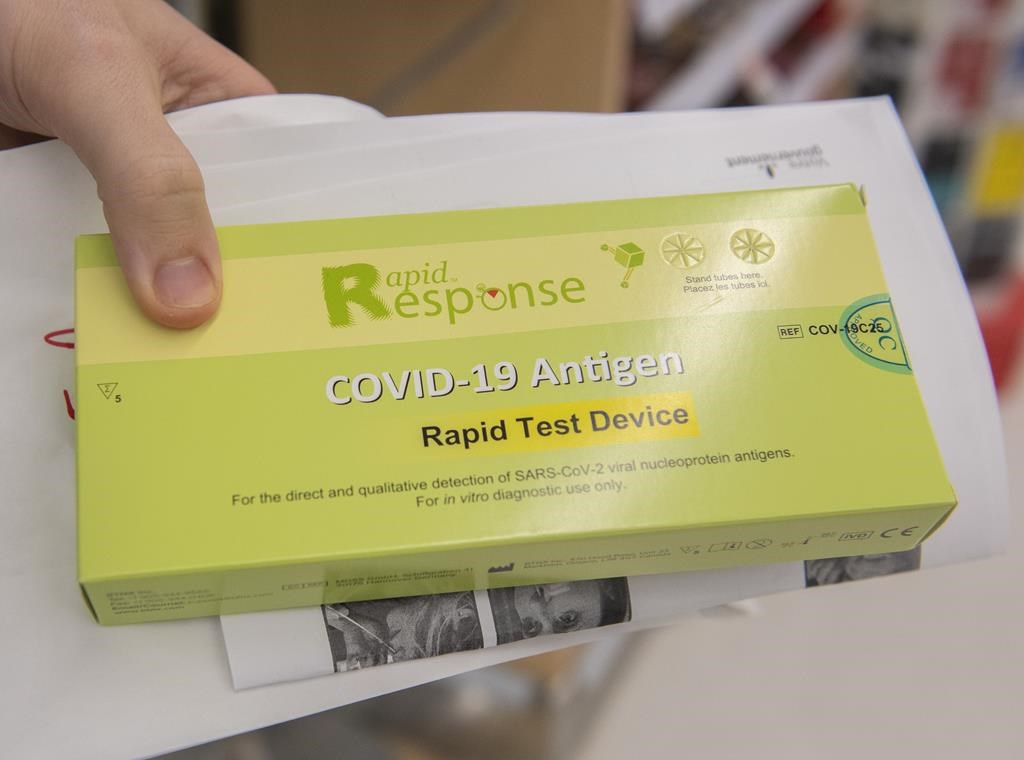Federal government struggling to get rid of millions of extra COVID-19 rapid tests

Posted July 29, 2023 5:00 am.
The federal government is sitting on a stockpile of 39 million extra rapid tests for COVID-19 and is struggling to get rid of them without chucking them in the trash, an internal Health Canada memo shows.
As the Omicron variant of the virus began to tear across Canada at the end of 2021, the government rapidly bought up rapid antigen tests, distributing most of them to the provinces so people could swab themselves for the virus at home.
Now that far fewer people are subjecting themselves to the brain-tickling sensation of a COVID-19 test outside of hospitals and other health-care settings, the government appears to have more than it knows what to do with.
“Acknowledging the volumes of tests in play and the challenge of divesting such quantity over a time-bound period, it is expected that disposal of expired tests would be required,” staff wrote to Health Canada’s deputy minister in a memo signed March 25.
The memo was obtained through federal access-to-information laws.
Rapid tests were considered both important and valuable in early 2022, as regular test capacity was reserved only for certain cases in most provinces. Since the beginning of the pandemic, Canada has spent roughly $5 billion on rapid tests.
Even after the initial rise in Omicron infections settled down, the government continued to accumulate tests in case the country was hit with another large wave of infections.
That wave never came, and as public health restrictions were gradually lifted, the government found itself with a stockpile of some 93 million tests as of March 21.
By July 25, the store of tests was still sitting at over 90 million, Health Canada said in a statement.
Provinces and territories now have enough supply of their own to give eight tests to each Canadian. The federal health department plans to keep up to 55 million in reserve to prepare for the next emergency, which leaves 39 million extra as of the end of March.
Staff suggested several means of off-loading the tests, but each comes with its own challenges. The largest obstacle is their short shelf life — they usually only last one or two years.
“In practice, offering tests with less than eight to 12 months of shelf life may present challenges,” the memo says, though the specific reasons for that are redacted.
So far no tests have been binned, though the department says 2.1 million tests are either damaged, expired or considered “non-compliant” and can’t be distributed.
Another 38,722 are expected to perish in August and September, the memo shows. Most tests will expire in 2024.
The department recommended shipping the tests abroad to countries that need them, or even potentially paying the manufacturers to take the tests back.
To date, neither of those things has happened.
In a written statement, Health Canada said some tests are being donated to non-profits, public institutions and charities through GCDonate, a part of the government’s online surplus site.
They’re are also being shared among government departments for employee testing programs.
“The Government of Canada has also been actively engaging with the World Health Organization, the Canadian Red Cross, other non-governmental organizations and private foundations to better understand global demand and explore the feasibility of international donation opportunities,” the department said in the statement.
“Financially and environmentally sound disposal will be considered only when all deployment and divestment options have been exhausted, and tests are ineligible for distribution.”
In the memo, staff said they plan to come up for a plan to start disposing of unused tests for the deputy minister’s approval.








